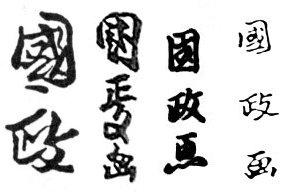Utagawa Kunimasa on:
[Wikipedia]
[Google]
[Amazon]


 was a Japanese
was a Japanese
OCLC 5246796
*Morse, Anne Nishimura (1985). "Utagawa Kunimasa". Kodansha Encyclopedia of Japan. Tokyo: Kodansha Ltd.
British Museum: Utagawa Kunimasa, The actor Ichikawa Ebizō in a shibaraku role, a colour woodblock printArt site
1773 births 1810 deaths Ukiyo-e artists Utagawa school {{printmaker-stub


 was a Japanese
was a Japanese ukiyo-e
Ukiyo-e is a genre of Japanese art which flourished from the 17th through 19th centuries. Its artists produced woodblock prints and paintings of such subjects as female beauties; kabuki actors and sumo wrestlers; scenes from history and folk ta ...
artist of the Utagawa school
The Utagawa school () was one of the main schools of ukiyo-e, founded by Utagawa Toyoharu. It was the largest ukiyo-e school of its period. The main styles were bijin-ga (beautiful women) and uki-e (perspective picture). His pupil, Toyokuni I, to ...
. He was originally from Aizu in Iwashiro Province
is an old province in the area of Fukushima Prefecture. Nussbaum, Louis-Frédéric. (2005). "''Iwashiro''" in . It was sometimes called .
The province occupies the western half of the central part of Fukushima Prefecture; the eastern half is I ...
and first worked in a dye shop after arriving in Edo
Edo ( ja, , , "bay-entrance" or "estuary"), also romanized as Jedo, Yedo or Yeddo, is the former name of Tokyo.
Edo, formerly a ''jōkamachi'' (castle town) centered on Edo Castle located in Musashi Province, became the ''de facto'' capital of ...
(modern Tokyo). It was there that he was noticed by Utagawa Toyokuni
Utagawa Toyokuni ( ja, 歌川豊国; 1769 in Edo – 24 February 1825 in Edo), also often referred to as Toyokuni I, to distinguish him from the members of his school who took over his ''gō'' (art-name) after he died, was a great mast ...
, to whom he became apprenticed.
Kunimasa is especially known for his ''yakusha-e
''Yakusha-e'' (役者絵), often referred to as "actor prints" in English, are Japanese woodblock prints or, rarely, paintings, of kabuki actors, particularly those done in the '' ukiyo-e'' style popular through the Edo period (1603–1867) and ...
'' portrait prints of kabuki
is a classical form of Japanese dance- drama. Kabuki theatre is known for its heavily-stylised performances, the often-glamorous costumes worn by performers, and for the elaborate make-up worn by some of its performers.
Kabuki is thought ...
actors, and for his ''bijin-ga
is a generic term for pictures of beautiful women () in Japanese art, especially in woodblock printing of the ukiyo-e genre.
Definition
defines as a picture that simply "emphasizes the beauty of women", and the ''Shincho Encyclopedia of ...
'' pictures of beautiful women. Richard Lane described his style as striving to "combine the intensity of Sharaku
Tōshūsai Sharaku ( ja, 東洲斎 写楽; active 1794–1795) was a Japanese ukiyo-e print designer, known for his portraits of kabuki actors. Neither his true name nor the dates of his birth or death are known. His active career as a woodblo ...
with the decorative pageantry of his master Toyokuni". Lane, Richard (1978). ''Images of the Floating World''. Old Saybrook, CT: Konecky & Konecky. p. 152. Those who make such comparison often say he failed to achieve the level of Sharaku's intensity.
Notes
References
* Lane, Richard. (1978). ''Images from the Floating World, The Japanese Print''. Oxford: Oxford University Press.OCLC 5246796
*Morse, Anne Nishimura (1985). "Utagawa Kunimasa". Kodansha Encyclopedia of Japan. Tokyo: Kodansha Ltd.
External links
British Museum: Utagawa Kunimasa, The actor Ichikawa Ebizō in a shibaraku role, a colour woodblock print
1773 births 1810 deaths Ukiyo-e artists Utagawa school {{printmaker-stub